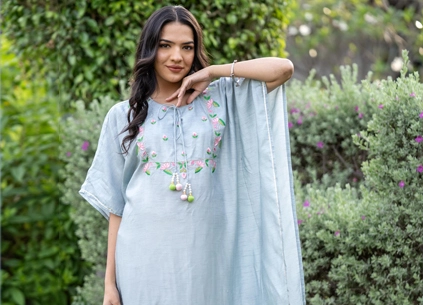What makes Ikat different from other fabrics?
Posted: August 29, 2021
Posted: August 29, 2021
Change is the law of nature and women implement this law very well. Every human being especially women want something new and different every time they dress up. They get bored of fabrics very quickly. Usually people used to wear cotton fabrics with block prints or “tie and dyes” in summers but as rightly said, something different was needed by the women after certain time which laid to the formation of Ikat fabric. This fabric is nothing but a uniquely hand dyed and woven fabric. Though it is one of the oldest forms of textile designing but it is still favourite among the ladies.
While preparing other hand-made fabrics like “tie and dye” or “block print”, firstly the fabric is woven and then it is dyed in the desired pattern. Like in “tie and die”, we tie different types of knots of the already woven fabric and then die it into different colors. Or while preparing handmade block print fabric, fabric is tied onto the table or some base and then the printing is done by using blocks dipped in various colors. The common thing between these types of fabrics is the process of first weaving the fabrics and then dyeing them to get the required patterns.
What makes Ikat different from other fabrics is its making technique! Ikat print fabric making is comparatively tough and laborious process than other handmade fabrics. Its making involves the reverse process of first dyeing and then weaving. In this, firstly the individual yarns or the bundle of yarns of thread are bound tightly in the desired patterns. The patterns are created by using dye resistant rubber bands in order to avoid any kind of exposure to colors in the particular area. Then, these yarns of threads are dyed. Different colors and patterns can be used while implementing the dyeing process. After getting the yarns dried up, the elastic bands are removed which leaves behind the white spaces. The most interesting part of the Ikat making is that these pattern-dyed yarns of threads are woven into fabric later which is completely the contrary process of other fabric makings.
Also, there are types of ikat fabrics such as warp, weft and double ikat (a blend of warp and weft). All three of them involve unique dyeing and weaving techniques.




Validate your login
Sign In
Create New Account